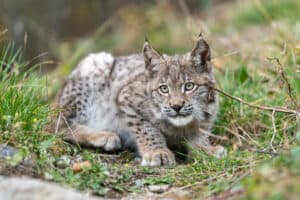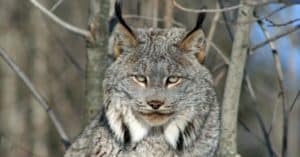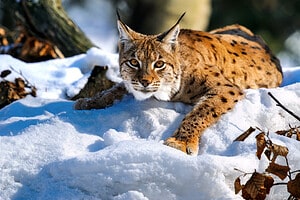Continue reading for our analysis...
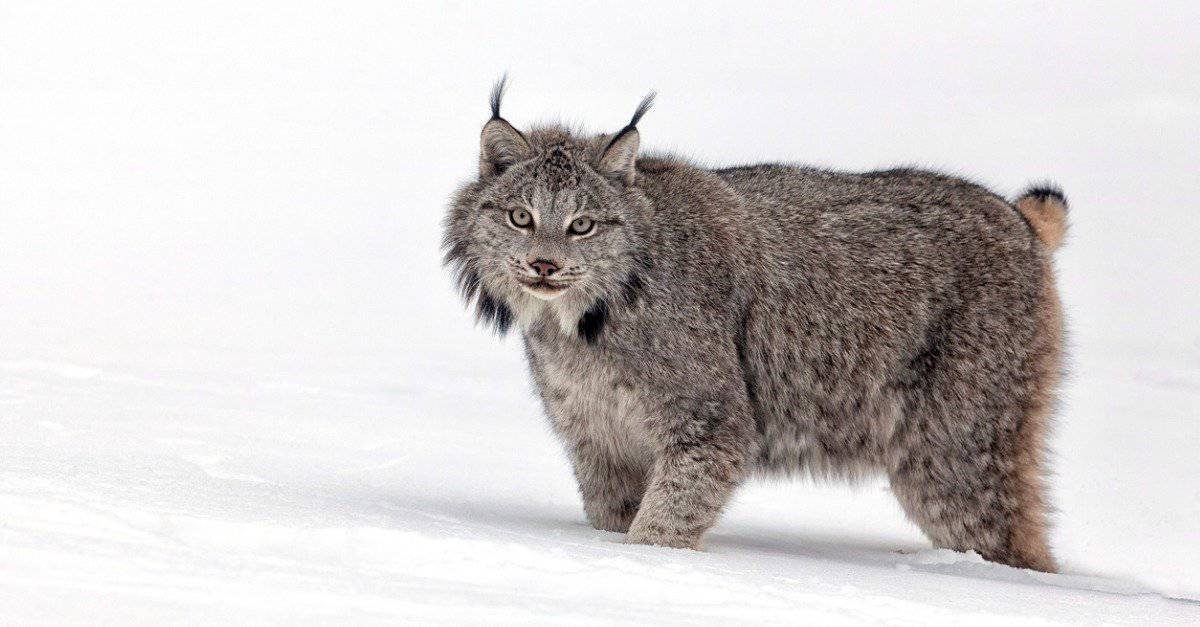
A lynx is named for the root word leuk, which means “light” or “brightness.” A wild lynx in Alberta, Canada used its bright eyes to peer into a skidder that was parked in the forest.
The video begins by showing the lynx standing on top of the large tires with snow chains. At first, the animal just stands still, looking around at the environment. Snow is on the ground, not surprising for Alberta in February when this video was filmed.
The lynx eventually looks up at Dean Erickson, the man who was filming. He zooms in to get a closer shot of the animal. Still content to stand on the large tire, the lynx just looks around with a look of satisfaction in its eye.
The lynx is light grey with bits of tan in its fur. Like other lynxes, it has black-tufted ears. Some lynxes have darker fur, such as brown or gold. It is often based on the environment where the lynx lives. This lynx lives in snowy Alberta so its fur is a mix of white and beige. It does have white fur on its chest.
The lynx looks directly at the camera a few times, likely curious about the man. The lynx also looks down at the ground. s
Eventually, the lynx moves up to the upper part of the Skidder. Erickson has to shift to filming the animal from a safe distance. Even though they look like housecats, lynxes are still wild animals and should be treated with plenty of caution. Wisely, Erickson keeps his distance from the lynx.
Another person can be seen approaching from a distance. They also stop and give the lynx plenty of space. It is important to avoid seeming to threaten the lynx. It also allows it room to jump down and return to the wild, its home.
Where Does The Lynx Wild Cat Live?
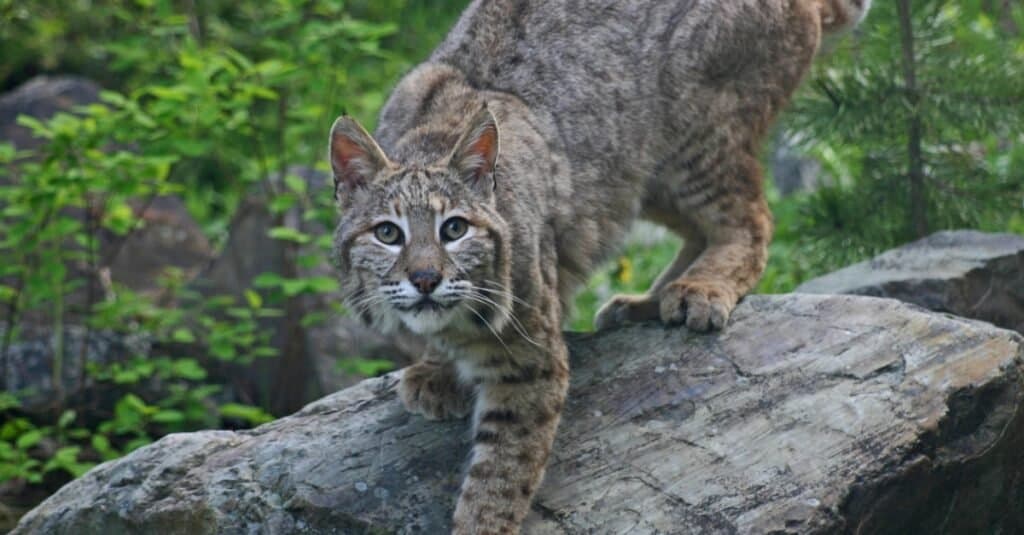
Lynx are commonly encountered in forested habitats, particularly in boreal forests that are distinguished by the presence of coniferous trees like spruce, pine, and fir.
©iStock.com/Anita Elder Design
The lynx is a medium-sized wildcat that is native to the boreal forests of the northern hemisphere.
- Eurasia: In Europe, the lynx can be found in countries such as Sweden, Norway, Finland, Estonia, Latvia, Poland, and Russia.
- North America: In North America, the lynx can be found in Canada, particularly in the provinces of Quebec, Ontario, and British Columbia, as well as in Alaska, USA.
Lynx are typically found in forests, especially boreal forests, which are characterized by coniferous trees such as spruce, pine, and fir. They also live in subalpine, alpine, and tundra habitats. They are well adapted to living in snowy environments, with large, padded paws that help them move silently over the snow and tufts of hair on their ears that help them detect prey under the snow.
Lynx are also found in the mountains, they are well adapted to living in cold environments, with thick fur coats that help them survive in the snow.
It’s worth noting that each subspecies of lynx has its own specific habitat requirements, and not all lynx will be found in all of these habitats.
What is the Lifespan of a Lynx?
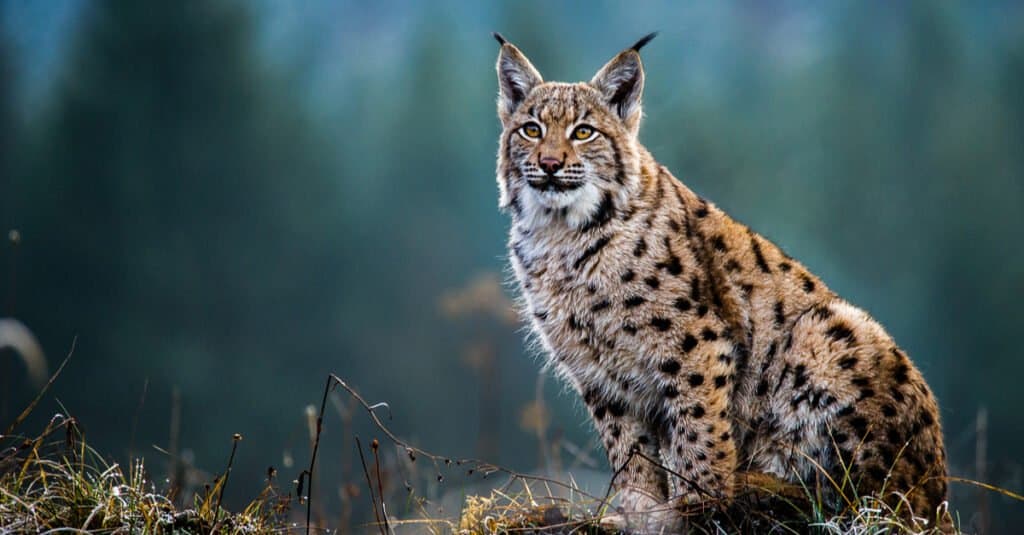
The Eurasian lynx has some of the longest lifespans on lynx species.
©Tomas Hulik ARTpoint/Shutterstock.com
The lifespan of a lynx can vary depending on the species. The most common species found in North America are the Canada lynx and the Bobcat, which typically have the following lifespan:
- In the wild: The average lifespan of a Canada lynx or Bobcat in the wild is around 8-10 years, although some individuals may live up to 12 years.
- In captivity: When living in captivity, Canada lynx and Bobcat can live up to 15-18 years, due to the controlled environment and the care they receive.
It is worth noting that the lifespan of a lynx can be influenced by a variety of factors, including food availability, disease, and human activity. Lynx are also facing threats like habitat loss and poaching, which can reduce their lifespan.
Lynx vs Bobcat: Who Would Win?
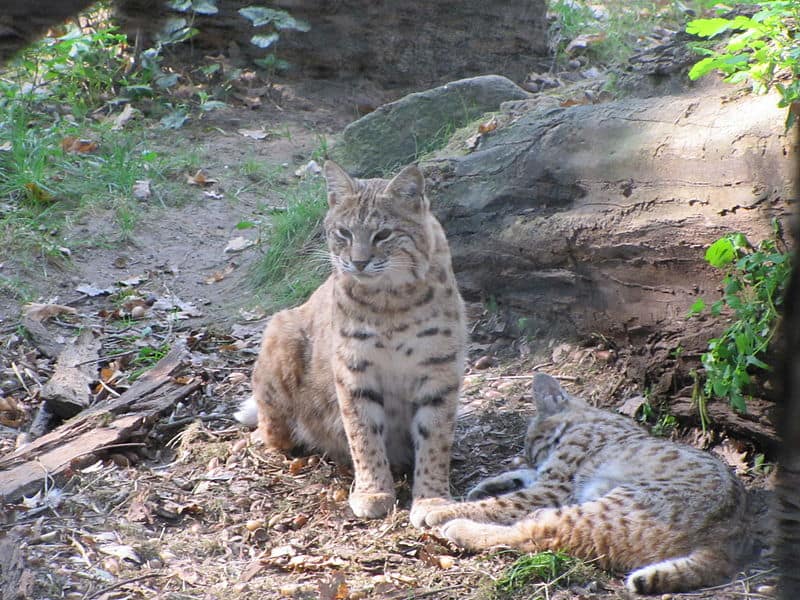
Two young Bobcats (Lynx rufus) in Zoo Cottbus
©Redrobsche, CC BY-SA 3.0, via Wikimedia Commons – License
Lynx and bobcats are two medium-sized wild cats that share many similarities, this includes their appearance and habitats. However, when it comes to who would win a fight, there are some significant differences that would determine the results.
Lynx are larger than bobcats weighing about 10 to 24 pounds, while a bobcat is smaller weighing about 13 pounds on average. Lynx also have longer legs and much larger paws. This would give them an advantage during a challenge.
When it comes to hunting, both cats are skilled but lynx hunt snowshoe hares while bobcats prey on a variety o different animals. While it would be possible for a bobcat to win in a fight. It’s more likely that the larger size and strength of the lynx would give it an advantage in a one-on-one battle.
Do Rare Lynx Normally Approach Humans?
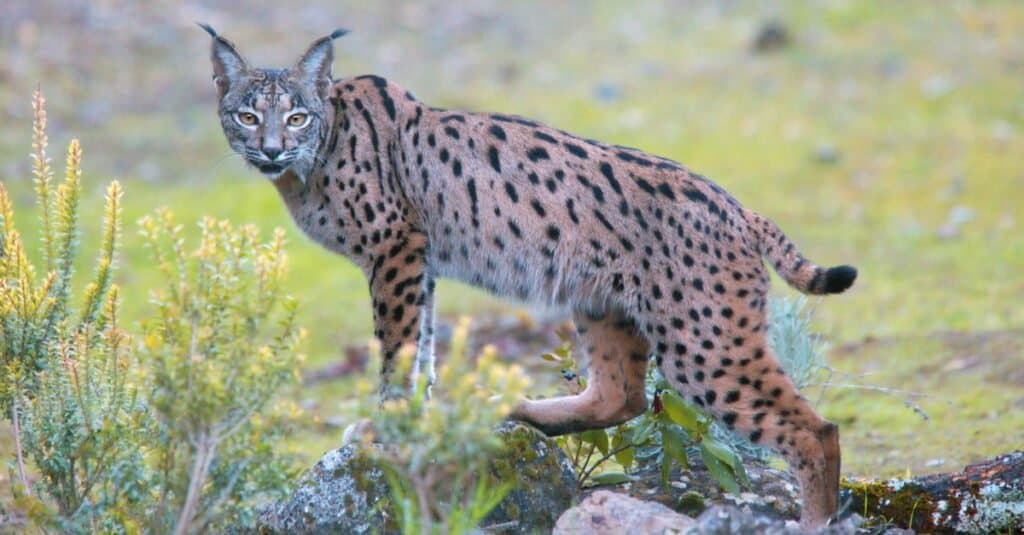
Iberian Lynx, (Lynx pardinus) among the rocks in Sierra Morena, Andalucia, Spain. These wild cats prey on rabbits, rodents, and other small mammals.
©tony mills/Shutterstock.com
Lynxes are not friendly animals and tend to keep to themselves – so odds are that you will not encounter one in the wild. Except for mothers and their offspring, lynxes are solitary creatures rarely seen in groups. Unlike wolves or lions, lynxes lack a social structure of dominance – they just want to be left alone to hunt their favorite food – snowshoe hare.
The lynx in the video wasn’t curious about the people – she just wanted a good dry place to sit for a moment of rest.
Are Lynx Rare in the United States?
In the lower 48 states, Lynx are among the most endangered felines with only a few hundred animals remaining. They are considered threatened under the Federal Endangered Species Act – although they are still hunted for their fur in Canada where they are more plentiful.
Aggressive logging, road building, and the development of Lynx habitat have fragmented their space to roam. Snowmobile tracks and roads provide pathways for cougar and coyotes, who eat lynxes, and bobcats who compete for the same prey.
Thank you for reading! Have some feedback for us? Contact the AZ Animals editorial team.




